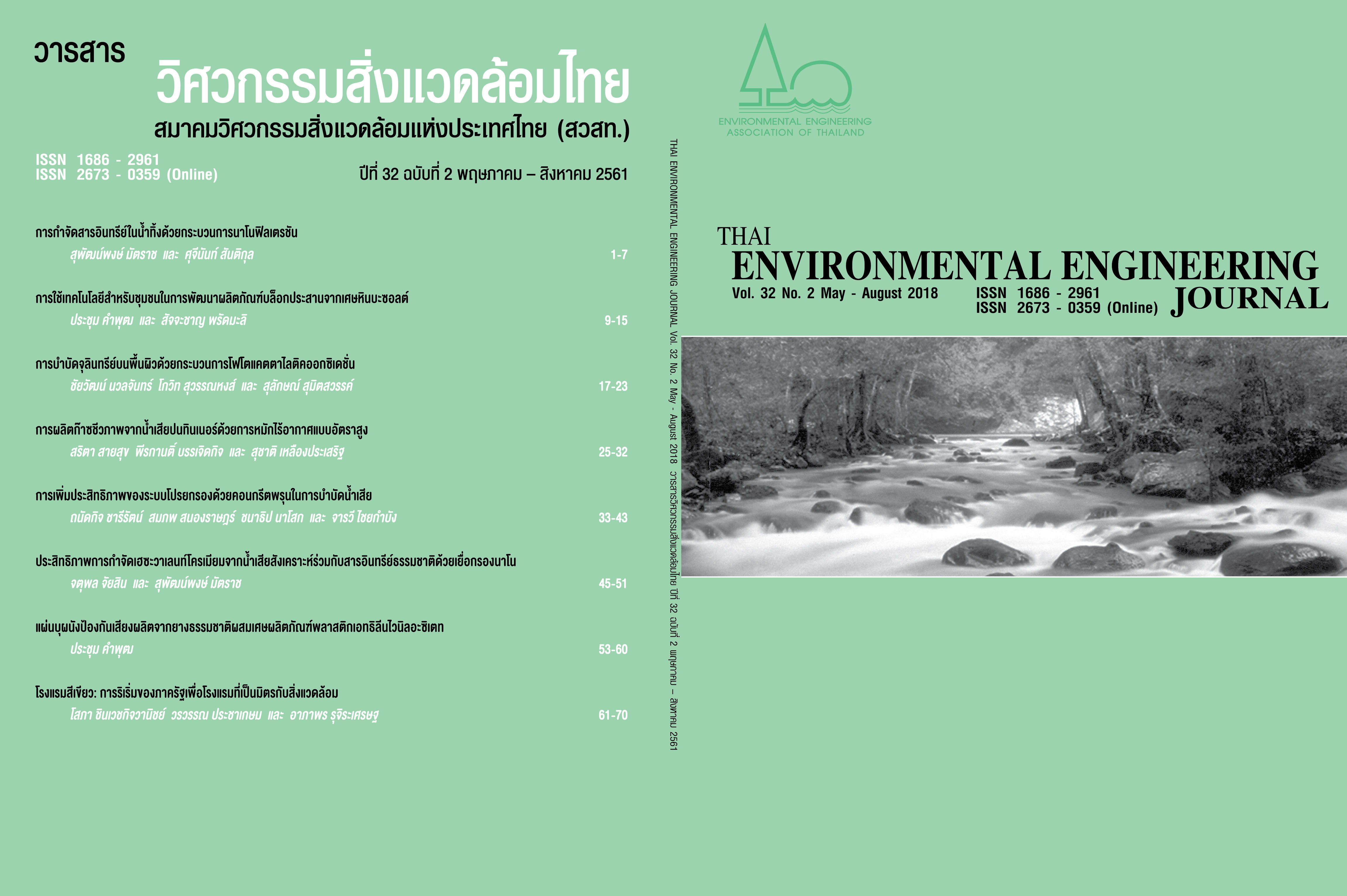Acoustic Board Produced from Natural Rubber Mixed with Waste of Ethylene Vinyl Acetate Products
Main Article Content
Abstract
This research aimed to study the production of acoustic board from natural rubber mixed with waste of ethylene vinyl acetate (EVA) products. According to the property tests, the EVA plastic properties included density 190 kg/m3, hardness 43 shore A, and tensile strength 4.2 MPa. These acoustic boards were produced by grinding the EVA plastic to pass the sieve no.4 (4.75 mm) and mixing the EVA plastic to natural rubber STR 20, zinc oxide, stearic acid, sulfur, mercaptobenzothiazole, diphenyl guanidine, and oxybis (benzene sulfonyl) hydrazide. The 0, 5, 10, 20, 40 and 80 phr of EVA plastic were designed to produce the acoustic boards. The two roll mill and hot compression machines casted the acoustic boards by using 150 degree of Celsius. When tested the sound insulation efficiency, physical properties, and mechanical properties, the ratio 40 phr of acoustic board from natural rubber mixed with EVA plastic was the proper ratio. The sound absorption coefficient (a) of this acoustic board was 0.4 to 0.51 which depended on the thickness. The developed acoustic board can be applied for the commercial product.
Article Details
References
[2] Cabanaugh, William J. and Wikes, Joseph A, 1998. Architectural Acoustics: Principles and Practice, New York, John Wiley&Sons. 21.
[3] ISO 354(en), 2003. Acoustics: Measurement of sound absorption in a reverberation room.
[4] ISO 10534-1(en), 1996. Acoustics: determination of sound absorption coefficient and impedance in impedance tubes, Part 1: Method using standing wave ratio.

